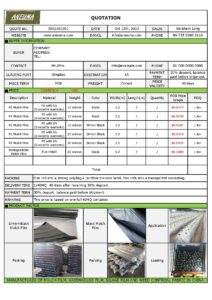Introduction
Weeds, those persistent and unwelcome guests in our gardens and landscapes, have a knack for hindering the growth and health of our cherished plants. To keep them at bay, installing weed control fabric can be a game-changer. In this step-by-step guide, we will explore the process of installing weed control fabric to ensure that your plants flourish, unburdened by the relentless intrusion of weeds.
Understanding the Importance of Weed Control
Before we delve into the installation process, it’s essential to understand why weed control is so vital. Weeds compete with your desirable plants for essential resources such as nutrients, water, and sunlight. This competition can stunt the growth of your plants and even lead to their demise. Preventing weeds from taking root is the first step in maintaining a thriving garden or landscape.
Preparation Phase
Gathering Essential Tools and Materials
Before you begin, gather the necessary tools and materials:
- Weed Control Fabric: Choose a high-quality fabric that suits your needs.
- Securing Pins or Stakes: These will keep the fabric in place.
- Scissors or Utility Knife: For cutting the fabric as needed.
- Measuring Tape or String: To ensure precise placement.
Site Preparation
- Clearing the Area of Existing Weeds: Remove any existing weeds from the area where you plan to install the fabric. This step is crucial to prevent weeds from growing through the fabric.
- Leveling the Ground: Ensure that the soil is even and free from any large rocks or debris.
- Soil Assessment and Improvement (if necessary): Test the soil for pH and nutrient levels. Make amendments as required to create an optimal growing environment for your plants.
Installation Process
Measuring and Cutting Fabric
- Determining the Fabric Length and Width: Measure the area you want to cover with the fabric and add a few extra inches for overlap.
- Using Scissors or a Utility Knife for Precision: Carefully cut the fabric according to your measurements.
Laying the Foundation
- Placing the Fabric on Prepared Soil: Lay the fabric over the prepared area, ensuring it covers the soil completely.
- Ensuring Proper Alignment and Overlap: Avoid leaving gaps that weeds could exploit. Overlap the edges of adjacent fabric strips to create a seamless barrier.
Securing the Edges
- Using Securing Pins or Stakes: Secure the fabric’s edges and corners with pins or stakes. Place them at regular intervals to hold the fabric firmly in place.
Planting and Mulching
Cutting Plant Holes
- Creating Openings for Desired Plants: Use your scissors or utility knife to cut holes in the fabric where you plan to plant. Ensure that the holes are large enough to accommodate your plants.
- Ensuring Proper Spacing: Maintain the recommended spacing between plants to allow for healthy growth.
Mulching
- Applying Mulch around Plants: After planting, spread a layer of mulch around your plants. Mulch helps conserve moisture, suppresses additional weed growth, and maintains a more consistent soil temperature.
Maintenance and Long-Term Care
Inspecting for Weed Growth
- Regular Checks for Potential Breakthroughs: Periodically inspect the fabric for any signs of weed growth. Address any emerging weeds promptly.
- Prompt Removal of Any Emerging Weeds: Remove any weeds that manage to breach the fabric to prevent them from spreading.
Replacing and Reinstalling
- Knowing When It’s Time to Replace Fabric: Over time, the fabric may degrade or become less effective. Be prepared to replace it when necessary.
- Properly Disposing of Old Fabric: Dispose of old fabric responsibly, considering the environment.
Benefits of Weed Control Fabric
Weed Suppression
- How the Fabric Prevents Weed Growth: Weed control fabric creates a physical barrier that prevents weed seeds from reaching the soil and germinating. This suppression is vital for maintaining a weed-free environment.
- Impact on Plant Health: With weeds kept at bay, your plants have access to more nutrients, water, and sunlight, allowing them to thrive.
Improved Water Retention
- The Fabric’s Role in Moisture Conservation: Weed control fabric reduces water evaporation from the soil, helping to conserve moisture.
- Reducing Water Wastage: With less water lost to evaporation, you’ll need to water your plants less frequently, reducing water wastage.
Enhanced Soil Temperature
- Insulating Properties of Weed Control Fabric: The fabric acts as an insulator, helping to regulate soil temperature. This can be especially beneficial in extreme weather conditions.
- Effects on Plant Root Development: Plants with consistent soil temperatures can develop healthier root systems, leading to better overall growth.
Conclusion
Efficiency and Sustainability
Weed control fabric provides an efficient and sustainable solution to the age-old problem of weed management. By following this step-by-step guide for installation and understanding the benefits it offers, you can maintain a weed-free, thriving landscape that allows your plants to reach their full potential. Whether you’re tending to a garden, landscaping, or agricultural plot, weed control fabric can be your ally in achieving your growing goals.
And remember, when choosing your weed control fabric, consider options like Aneuma weed control fabric, which can offer superior performance and durability to safeguard your plants for years to come.

